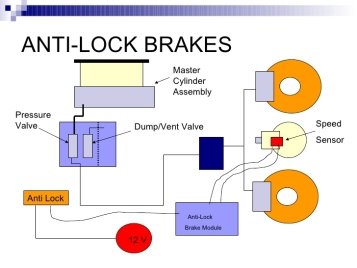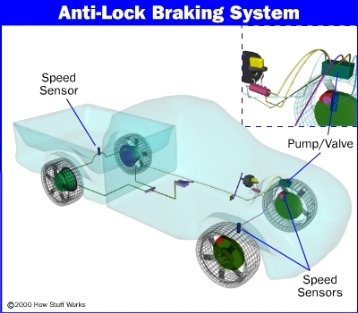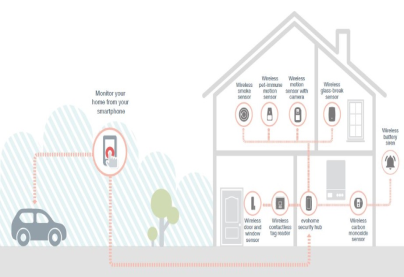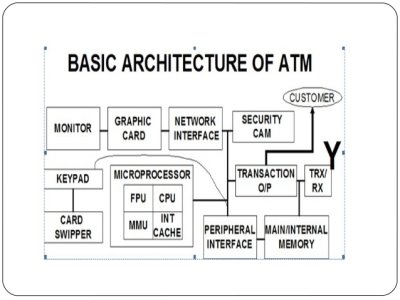Introduction
It is probably no surprise that millions of computing systems are built every year destined for desktop computers (Personal Computers, or PC’s), workstations, mainframes and servers.
This thesis introduces embedded system design using a modern approach. Modern design requires a designer to have a unified view of software and hardware seeing them not as completely different domains, but rather as two implementation options along a continuum of options varying in their design metrics (cost, performance, power, flexibility, etc.). Three important trends have made such a unified view possible.
First, integrated circuit (IC) capacities have increased to the point that both software processors and custom hardware processors now commonly coexist on a single IC.
Second, quality compiler availability and average program sizes have increased to the point that C compilers (and even C++ or in some cases Java) have become commonplace in embedded systems.
Third, synthesis technology has advanced to the point that synthesis tools have become commonplace in the design of digital hardware. Such tools achieve nearly the same for hardware design as compilers achieve in software design: they allow the designer to describe desired processing in a high-level programming language, and they then automatically generate an efficient (in this case custom-hardware) processor implementation.
Embedded systems are found in a variety of common electronic devices, such as:
1) consumer electronics; cell phones, pagers, digital cameras, camcorders’, videocassette recorders, portable video games, calculators, and personal digital assistants;
2) Home appliances; microwave ovens, answering machines, thermostat, home security, washing machines, and lighting systems;
3) office automation; fax machines, copiers, printers, and scanners;
4) business equipment; cash registers, curbside check-in, alarm systems, card readers, product scanners, and automated teller machines;
5) Automobiles; transmission control, cruise control, fuel injection, anti-lock brakes, and active suspension.
An anti-lock braking system (ABS) is an automobile safety system that allows the wheels on a motor vehicle to maintain the active contact with the road surface according to driver inputs while braking, preventing the wheels from locking up (ceasing rotation) and avoiding uncontrolled skidding. It is an automated system that uses the principles ofthreshold brakingandcadence brakingwhich were practiced by skillful drivers with previous generation braking systems. It does this at a much faster rate and with better control than a driver could manage [1]. ABS generally offers improved vehicle control and decreases stopping distances on dry and slippery surfaces; however, on loose gravel or snow-covered surfaces, ABS can significantly increase braking distance, although still improving vehicle control and shown scheme figure 1.

Figure 1.Scheme of anti-lock brakes
Anti-Lock Brake Types. Anti-lock braking systems use different schemes depending on the type of brakes in use. We will refer to them by the number of channels – that is, how many valves that are individually controlled – and the number of speed sensors.
Four-channel, four-sensor ABS – This is the best scheme. There is a speed sensor on all four wheels and a separate valve for all four wheels. With this setup, the controller monitors each wheel individually to make sure it is achieving maximum braking force.
Three-channel, three-sensor ABS – This scheme, commonly found on pickup trucks with four-wheel ABS, has a speed sensor and a valve for each of the front wheels, with one valve and one sensor for both rear wheels. The speed sensor for the rear wheels is located in the rear axle. This system provides individual control of the front wheels, so they can both achieve maximum braking force. The rear wheels, however, are monitored together; they both have to start to lock up before the ABS will activate on the rear. With this system, it is possible that one of the rear wheels will lock during a stop, reducing brake effectiveness.
One-channel, one-sensor ABS – This system is commonly found on pickup trucks with rear-wheel ABS. It has one valve, which controls both rear wheels, and one speed sensor, located in the rear axle.
This system operates the same as the rear end of a three-channel system. The rear wheels are monitored together and they both have to start to lock up before the ABS kicks in. In a system it is also possible that one of the rear wheels will lock, reducing brake effectiveness. This system is easy to identify. Usually there will be one brake line going through a T-fitting to both rear wheels. You can locate the speed sensor by looking for an electrical connection near the differential on the rear-axle housing. Following you can see location of anti-lock brake components (Figure 2).

Figure 2. Location of anti-lock brake components
Anautofocus(orAF)opticalsystem uses asensor, a control system and a motor or tunable optical element to focus automatically or on a manually selected point or area. An electronic has a display instead of the motor; the adjustment of the optical system has to be done manually until indication. Autofocus methods are distinguished by their type as being eitheractive,passiveor hybrid variants.
Active AF systems measure distance to the subject independently of the optical system, and subsequently adjust the optical system for correct focus.
Passive AF systems determine correct focus by performing passive analysis of the image that is entering the optical system.
PDA (personal digital assistant) is a term for any small mobile hand-held device that provides computing and information storage and retrieval capabilities for personal or business use, often for keeping schedule calendars and address book information handy. The term handheld is a synonym. Many people use the name of one of the popular PDA products as a generic term.
The advantages of PDA (Personal Digital Assistant) [8].
Size. They are small and getting smaller! PDAs have increased in power and decreased in size. They are designed to fit in the palm of your hand or your jacket pocket. How long, though, before you want something smaller yourself?
Storage. Appointments calendar, contact address book and an ability to keep notes and lists are typical features of a PDA. Spreadsheets, word documents and power points? Done. Want to read e-books and store photos on it? No problem. PDAs will help you prepare to pack before you travel. They will even store your shopping list!
Synchronicity. After adding information into it, a PDA allows you to automatically store everything in one place and then synchronize it with the data already on your PC.
Communication. PDAs have GPS, Wi-Fi, Email and Bluetooth connectivity, along with a host of other applications. They also allow you to connect with other PDAs.
Security. Backing up to PC, should you lose or break your PDA, means at least your data stays safe. Password management applications allow you to store them in encrypted format.
Home security is something applicable to all of us and involves the hardware in place on a property, and personal security practices. The hardware would be the doors, locks, alarm systems, lighting, motion detectors, and cameras systems that is installed on your property. Personal security practices would be ensuring doors are locked, alarms activated, windows closed and many other routine tasks, which act to prevent a burglary [3, 4, 5, 6] (Figure 3).

Figure 3. Home security system example
Scanners. Machines that have a scan function may be used to scan-to-email. The receiving e-mail must be at a college address; the system will not scan to outside addresses. Directions is posted а individual machines.
Automated teller machine. Using an ATM, customers can access their bank deposit or credit accounts in order to make a variety of transactions such as cash withdrawals, check balances, or credit mobile phones. If the currency being withdrawn from the ATM is different from that in which the bank account is denominated the money will be converted at an officialexchange rate. Thus, ATMs often provide the best possible exchange rates for foreign travelers. In figure 4 shown simple scheme of ATM [2,7].

Figure 4. Basic architecture of ATM.
Conclusion
In the nutshell, embedded system fragile our daily life; home, car, business, control system and others. Embedded systems also play a key role in the space sector, specifically for launch vehicles and satellites. In the automotive industry, manufacturers and their suppliers gain a technological advantage in engine control, active safety features and emerging technologies such as brake-by-wire and drive-by-wire. Modern railway signaling relies on embedded systems, and allows faster, safer, and heavier traffic. Embedded applications will be extensively used to make energy distribution more flexible, especially in view of the coming market liberalization. Embedded technologies are strategic for the telecommunications sector.
Reference:
1. Effectiveness of ABS and Vehicle Stability Control Systems. Royal Automobile Club of Victoria. April 2004. Retrieved 2010-12-07.
2. Sarah. Using ATM's abroad - Travel - Travel Tips - msnbc.com. MSNBC. Retrieved 2011-02-11.
3. Conte, G., & Scaradozzi, D. Viewing home automation systems as multiple agents systems. RoboCUP 2003, Padova, Italy. (2003).
4. Jawarkar, N. P., Ahmed, V., Ladhake, S. A. & Thakare, R. D. Micro-controller based Remote Monitoring using Mobile through Spoken Commands. Journal of Networks, 3(2), 58-63. (2008).
5. Murthy, M. V. R. Mobile based primary health care system for rural India. W3C workshop on Role of Mobile Technologies in Fostering Social Development, Jun 2008.
6. Shekhar K C and Lekshmy Shekhar, Banking Theory and Practice, 21st Edition, 2013.
7. IIBF, Principles and Practices of Banking, 3rd Edition, 2015.
8. https://www.techwalla.com/articles/advantages-of-personal-digital-assistants







